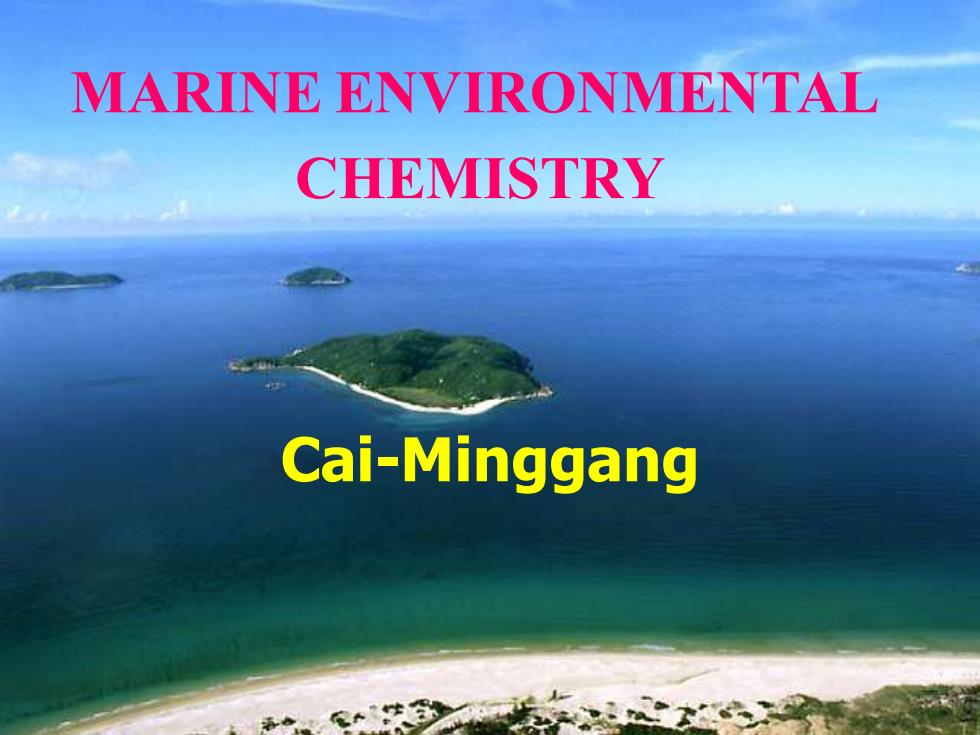
MARINE ENVIRONMENTAL CHEMISTRY Cai-Minggang
MARINE ENVIRONMENTAL CHEMISTRY Cai-Minggang
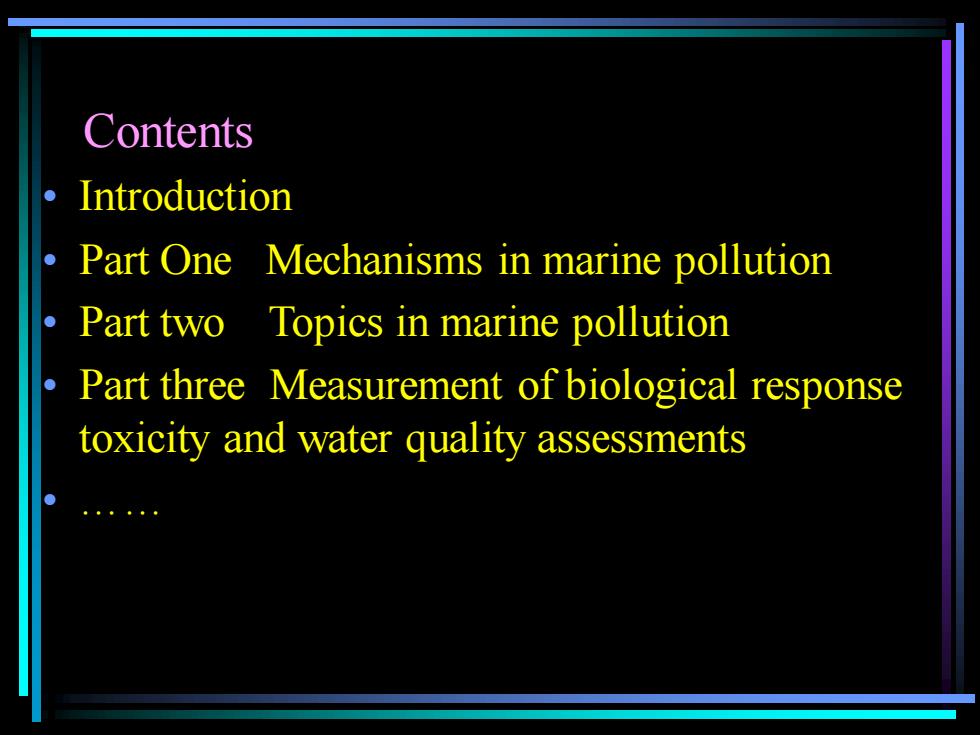
Contents • Introduction • Part One Mechanisms in marine pollution • Part two Topics in marine pollution • Part three Measurement of biological response toxicity and water quality assessments •
Contents • Introduction • Part One Mechanisms in marine pollution • Part two Topics in marine pollution • Part three Measurement of biological response toxicity and water quality assessments •
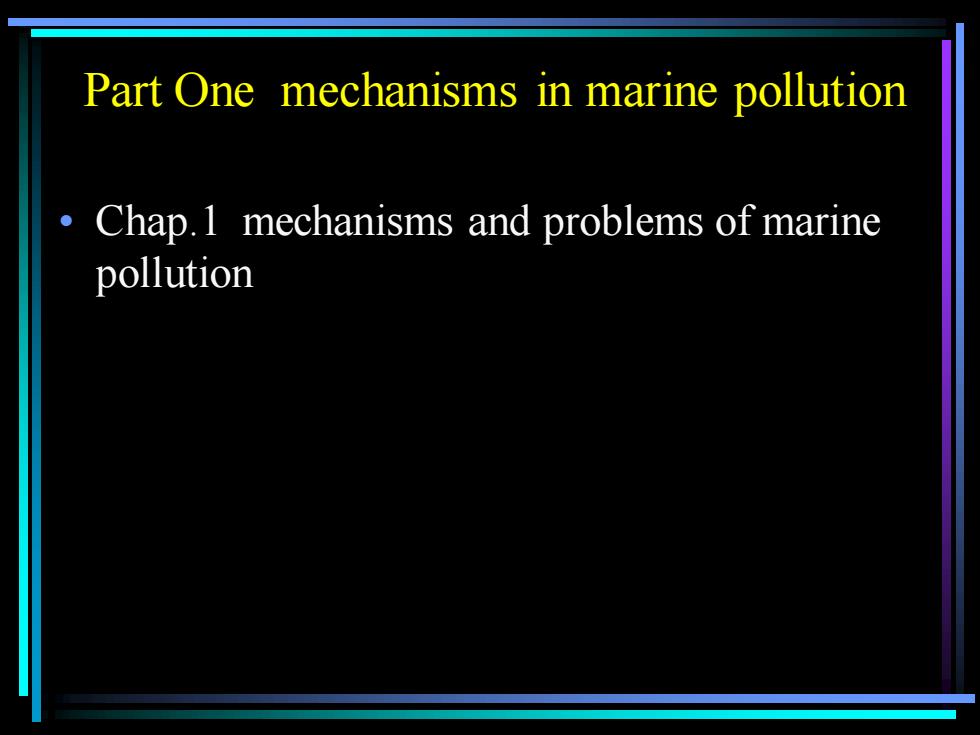
Part One mechanisms in marine pollution • Chap.1 mechanisms and problems of marine pollution
Part One mechanisms in marine pollution • Chap.1 mechanisms and problems of marine pollution
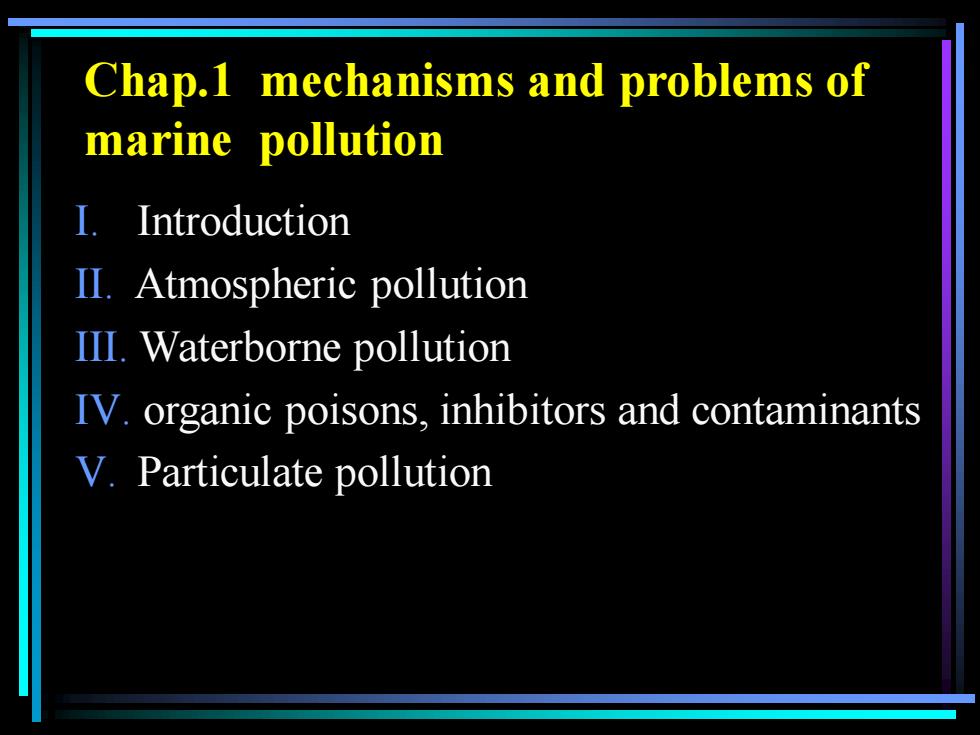
Chap.1 mechanisms and problems of marine pollution I. Introduction II. Atmospheric pollution III. Waterborne pollution IV. organic poisons, inhibitors and contaminants V. Particulate pollution
Chap.1 mechanisms and problems of marine pollution I. Introduction II. Atmospheric pollution III. Waterborne pollution IV. organic poisons, inhibitors and contaminants V. Particulate pollution
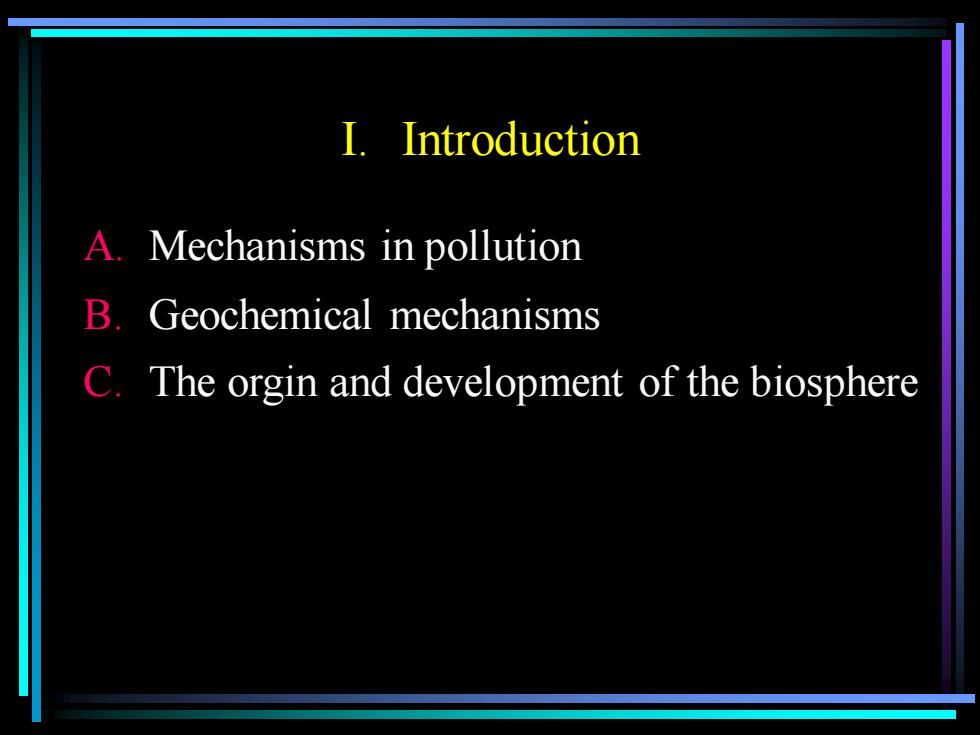
I. Introduction A. Mechanisms in pollution B. Geochemical mechanisms C. The orgin and development of the biosphere
I. Introduction A. Mechanisms in pollution B. Geochemical mechanisms C. The orgin and development of the biosphere
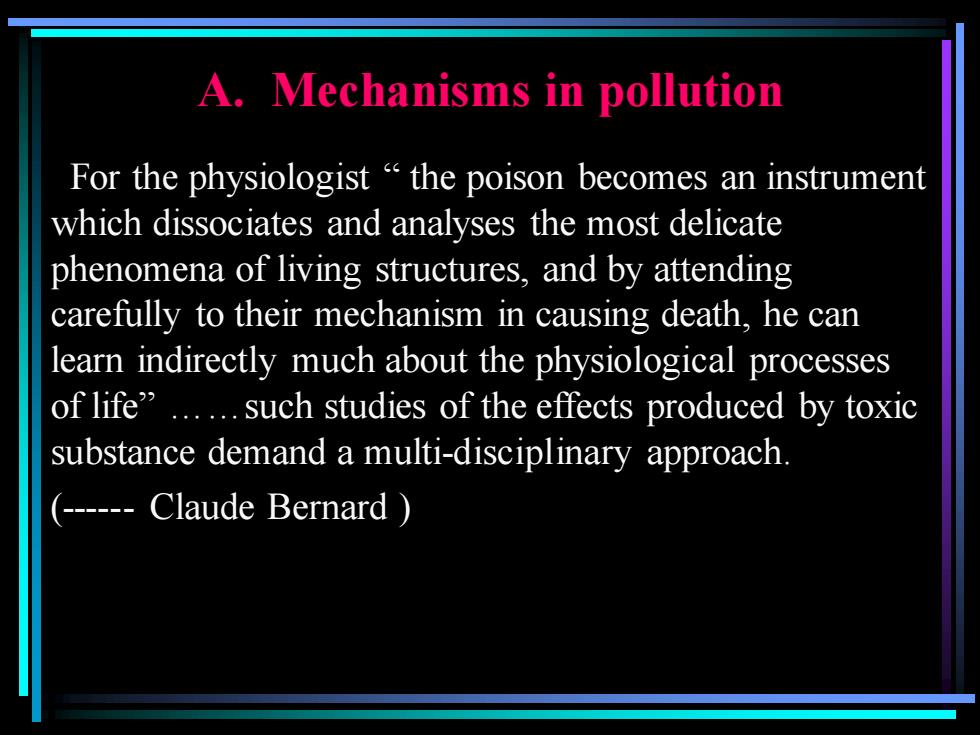
A. Mechanisms in pollution For the physiologist “ the poison becomes an instrument which dissociates and analyses the most delicate phenomena of living structures, and by attending carefully to their mechanism in causing death, he can learn indirectly much about the physiological processes of life” .such studies of the effects produced by toxic substance demand a multi-disciplinary approach. (- Claude Bernard )
A. Mechanisms in pollution For the physiologist “ the poison becomes an instrument which dissociates and analyses the most delicate phenomena of living structures, and by attending carefully to their mechanism in causing death, he can learn indirectly much about the physiological processes of life” .such studies of the effects produced by toxic substance demand a multi-disciplinary approach. (- Claude Bernard )

• Ecologists would probably like to refine the definition of toxic mechanisms not as those “causing death” but as those diminishing the success of the organism in its environment. • This is not always the same thing for humans and for marine creatures in their less prestigious existences. • Indeed this concept leads naturally to the usually accepted definition of “pollution”evolved by the SCOR Working Group of the United Nations
• Ecologists would probably like to refine the definition of toxic mechanisms not as those “causing death” but as those diminishing the success of the organism in its environment. • This is not always the same thing for humans and for marine creatures in their less prestigious existences. • Indeed this concept leads naturally to the usually accepted definition of “pollution”evolved by the SCOR Working Group of the United Nations

concept of marine pollution • The introduction by man, directly or indirectly, of substances or energy into the marine environment (including estuaries) resulting in such deleterious effects as harm to living resources, hazards to human health, hindrance to marine activeties including fishing, impairment of quality for use of sea water and reduction of amenities. —— evolved by the SCOR Working Group of the United Nations (1969)
concept of marine pollution • The introduction by man, directly or indirectly, of substances or energy into the marine environment (including estuaries) resulting in such deleterious effects as harm to living resources, hazards to human health, hindrance to marine activeties including fishing, impairment of quality for use of sea water and reduction of amenities. —— evolved by the SCOR Working Group of the United Nations (1969)
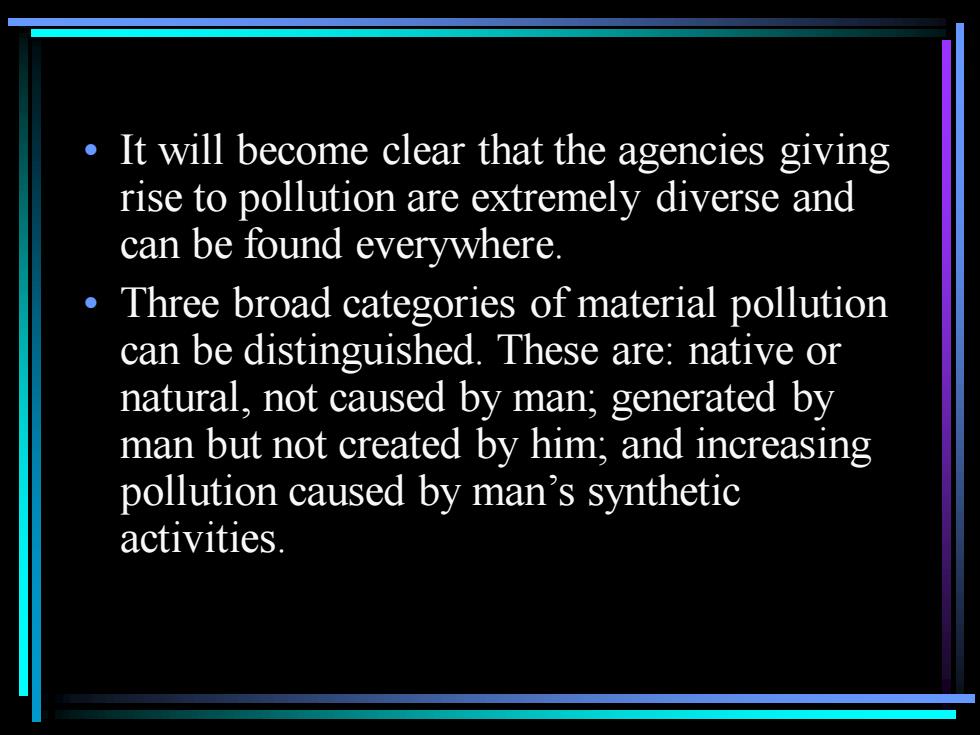
• It will become clear that the agencies giving rise to pollution are extremely diverse and can be found everywhere. • Three broad categories of material pollution can be distinguished. These are: native or natural, not caused by man; generated by man but not created by him; and increasing pollution caused by man’s synthetic activities
• It will become clear that the agencies giving rise to pollution are extremely diverse and can be found everywhere. • Three broad categories of material pollution can be distinguished. These are: native or natural, not caused by man; generated by man but not created by him; and increasing pollution caused by man’s synthetic activities
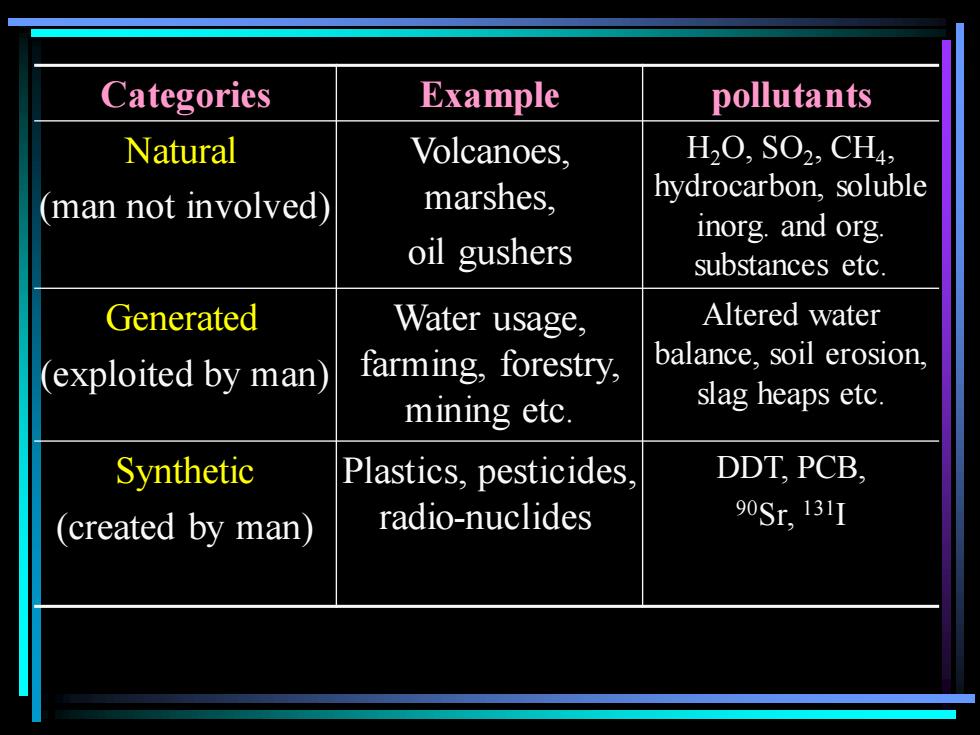
Categories Example pollutants Natural (man not involved) Volcanoes, marshes, oil gushers H2O, SO2 , CH4 , hydrocarbon, soluble inorg. and org. substances etc. Generated (exploited by man) Water usage, farming, forestry, mining etc. Altered water balance, soil erosion, slag heaps etc. Synthetic (created by man) Plastics, pesticides, radio-nuclides DDT, PCB, 90Sr, 131I
Categories Example pollutants Natural (man not involved) Volcanoes, marshes, oil gushers H2O, SO2 , CH4 , hydrocarbon, soluble inorg. and org. substances etc. Generated (exploited by man) Water usage, farming, forestry, mining etc. Altered water balance, soil erosion, slag heaps etc. Synthetic (created by man) Plastics, pesticides, radio-nuclides DDT, PCB, 90Sr, 131I